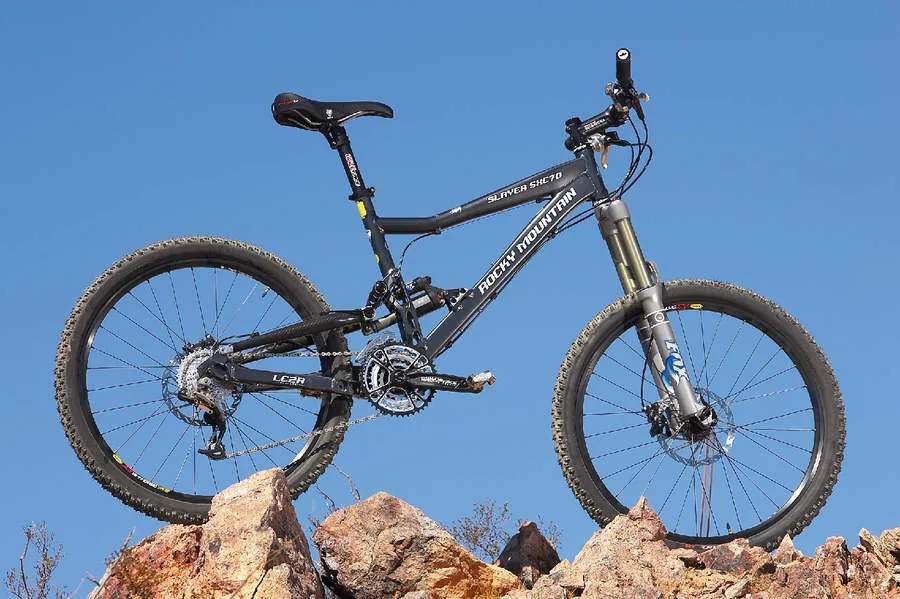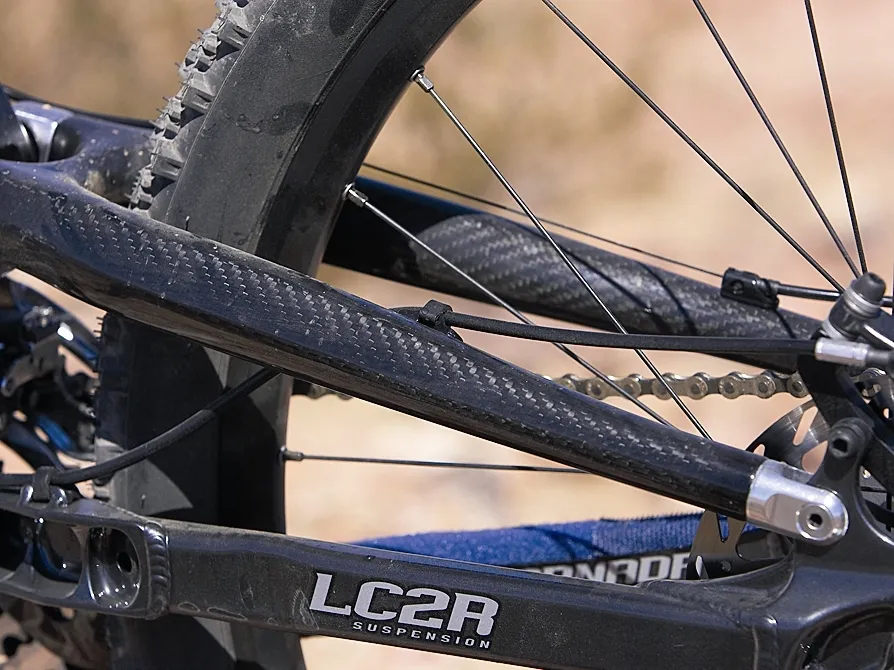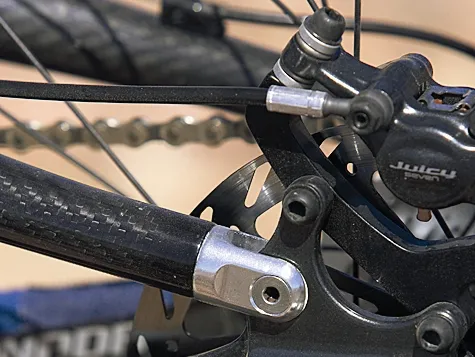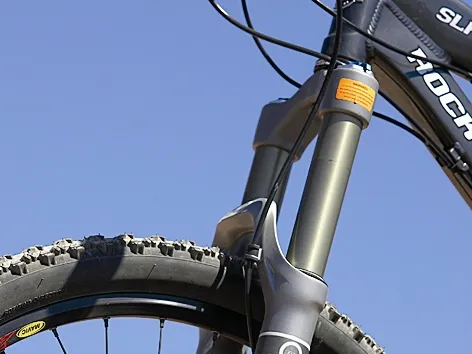Years ago we tested a red full suspension bike that really got us thinking. It wasn't a cross-country bike and it wasn't a freeride bike either, but it was certainly a shit load of fun.That bike was the first Rocky Mountain Slayer and the first of what would become 'all-mountain' bikes. So how good is the new one?
The frame: a different beast
Well, 'new' is slightly misleading as the significant changes to this chassis all happened last year. That was when the lighter, far better pedalling SXC slipped out from under the heavier, 'more hucker than hauler' Slayer.
Obvious changes were the use of a carbon fibre seatstay assembly and a simpler, more open lower seat tube/linkage mount section where it straddles the shock. The shock mount is also separated out onto the downtube, while the maintubes are lightened up all round for significantly lower frame weight.
A relatively small change in the shock driving linkage is what really made a difference to the ride though. By reducing leverage it no longer crushes the bike well into its 150mm (6in) of travel as soon as you sit on it, and pedaling performance is transformed.
The detail: proof of poor purchasing power
Like other small boutique brands Rocky Mountain always command premium prices. For example, while they all work well there's no escaping that Avid Juicy Seven brakes and mixed SRAM X-9, X-7 and Shimano Deore kit are equivalent to spec levels on mass manufactured bikes for £1,000 less. Extra pose and practical value is added by the exotic mixed mission RaceFace Deus XC/Atlas AM finishing kit.
The Fox TALAS fork is also a good match to the bike's versatility though, noticeably benefiting from the new '08 internals and quick-release axle rig. While we left it in full 160mm (6.2in) travel mode 90 per cent of the time, the shorter settings come in handy on super steep climbs where you'd be falling off the back and walking otherwise.
In-house hand building of the wheels adds strength to an otherwise mid-level package. The rare IRC Mibro tyres worked fine in all situations. Overall weight is definitely high for a bike of this type, spec and price tag though.
The ride: complete control
Rocky are bang on with the ride character. It's similar in weight and overall layout to the GT Force, but is slightly longer, slightly lower and slightly more relaxed - and all those 'slightly's add up to a lot. For a start it keeps you in control, rather than crapping it when you hit something too fast.
The relatively low-set frame and suspension weight keep you in the corner instead of threatening to throw you over the top too. There's occasional over-travel from the air shock when you're in mid-stroke but it never feels as though you're being robbed of useful control. The 3D mobility comes in handy for lifting the front over steps and drops or driving weight into the rear wheel in turns too.
Similarly while there's some twisting flex and wheel flop coming from the 'floating' seatstay design it's not enough to stop you going into stuff full throttle, you'll just notice the occasional shimmy and stuttering side slip if you do. Ditto with the slight 'jack' or stiffening of the suspension under braking. In fact, the overwhelming overall impression of the Slayer is that if you just relax and concentrate on the trail solutions not the problems, you'll soon be on the far side of them with no drama at all.
It's equally happy in cross-country mode as well. There's enough breathing space to get your chase on down the singletrack, or tap out sustainable tempo on long climbs. We certainly didn't feel the need to flick the ProPedal damping on often either as it runs a nice balance between traction and tight enough pedalling feel without it.
Conclusion: Good but heavy
However much ride character is more important than Top Trumps-style gram and gear comparison there's no doubt that other comparable bikes come in lighter. This gives you the option to underline them with sturdier wheels and tyres for increased stability on descents, or keep them light and lively for cross-country work. With the Slayer you'll struggle to lose significant weight without really compromising its can-do character, while adding some ballistic ballast will take it into the heavyweight category.




